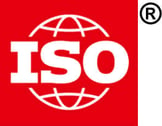The implications of the words “ferrous” and nonferrous” go way beyond adding three letters to the latter. Raw ferrous metals and nonferrous metals have their own unique qualities -- in some ways they’re polar opposites. The same applies to ferrous powder and nonferrous powder, so don’t mistake one for the other or your design will suffer.
Read on to learn the basics of ferrous and nonferrous metals -- types, qualities, and uses. After that we’ll cover some important factors to consider when you specify for powder metallurgy. You’ll be a design whiz in no time!
Basics of Ferrous Powder and Nonferrous Powder
Ferrous Metals
Ferrous metals are heavily iron-based.
Perhaps more importantly, they usually contain magnetic properties. The popular 300 series of stainless steels is an exception.
(DYK? The word “ferrous” comes from “ferrum,” which is Latin for “iron.” That’s why the chemical symbol for iron is Fe.)
Examples of ferrous materials include:
- Pure iron
- Carbon steel
- Cast iron
- Wrought iron
- Other steel alloys
Nonferrous Metals
Nonferrous metals, as you probably guessed, do not contain iron.
Examples of nonferrous metals include:
- Aluminum
- Copper
- Nickel
- Lead
- Zinc
- Tin
- Titanium
- Gold
- Silver
- Platinum
How They Matter in PM Applications
Ferrous
Ferrous powdered metals will give you the highest level of mechanical properties.
Ferrous metals are known for their:
- Durability
- Hardness
- Tensile strength
- Lower costs
- Magnetic function
- Broad flexibility
When we say more flexible, one of the ways we mean is with alloying. You can choose unique properties with iron that you may not be able to get with a nonferrous metal.
Note you can use ferrous metal in a sintered condition. If you want even higher strength, you can request heat treatment too. It’s a very flexible kind of material for someone selecting a part for the applications you see below.
Ferrous metals see wide use in almost all industries. Here are a few:
- Auto
- Power tools
- Construction
- Piping
- Shipping containers
- Industrial piping
Auto components made of ferrous powders include connecting rods, bearing caps, pulleys, and VVT parts. All are different alloys, and all are heat treated in different ways.
To summarize, if you’re considering powdered metal for designing gears or other auto parts, you can rest easy knowing they’ll have good strength and flexibility in manufacturing.
Those auto and other parts may also come together at a lower cost. Worldwide production of iron and other ferrous powders is very large-scale.
A final PSA about pure iron: You’ve already learned that iron-based materials typically have magnetic qualities. But high-purity iron has excellent soft magnetic qualities. A vendor can use coated or insulated iron particles to create soft magnetic composite material, adding new design options to your capabilities.
Soft magnetic composites offer new possibilities in 3D shape making that didn’t exist before. With the right composite, your application will:
- Run faster
- Consume far less energy
- Be more compact & dense
- Achieve high permeability
- Much more
A skilled powder metal parts maker can combine magnetic and nonmagnetic ferrous powder inside the same component.
Nonferrous
The properties of nonferrous powders tend to go in the opposite direction. Here are their key qualities:
- Not magnetic
- More difficult manufacturing process
- More lightweight
- Less prone to rust/corrosion
- More expensive
Nonferrous metals like aluminum, titanium, copper, etc. are produced in smaller quantities. This means they’re higher in price -- titanium for conventional powder metal can be $10-$20 a pound!
Whether you choose ferrous powder or nonferrous powder for an application, you should consider how easily your vendor can shape the powder into a finished part. Note that nonferrous metals tend to have a stronger reaction to rolling, forging, and other manufacturing process.
Some of the industries that use nonferrous powder are:
- Aircraft
- Auto
- Drills
- Electrical hardware
- Marine
- Golf clubs!
These metals have more variation in their characteristics than ferrous metals. Here are a few specific examples:
Aluminum is an especially soft metal, which is problematic in some cases. For example, making an automobile’s VVT parts out of aluminum is unwise because there’s a chain that rubs against the VVT. Your low-durability aluminum would sustain abrasions very easily.
Nickel is unique among nonferrous metals in that it’s magnetic. It’s used in applications requiring good corrosion resistance.
Copper is popular in applications involving water because it doesn’t corrode or rust in water. You’ll often see copper in sprinkler applications. It’s also used to paint the bottom of boats.
Maximize Your Design
As you can see, a little change in chemical structure can have a huge effect on a powdered metal. Knowing your materials will help you maximize your design’s performance and cost-effectiveness.
We suggest you take a stronger look particularly at soft magnetic composite -- it’s a huge untapped resource among powder metal that can open new possibilities in part design.
Need help with doing powdered metal differently? Get in touch with us for design advice by clicking the button below:



